South Nevada rock art, part 2
We continue the series by guest contributor Loretta who shares her observations and photos of rock art from her home region in southwest US, with links added by me. Please first visit Part 1 should you have missed it.
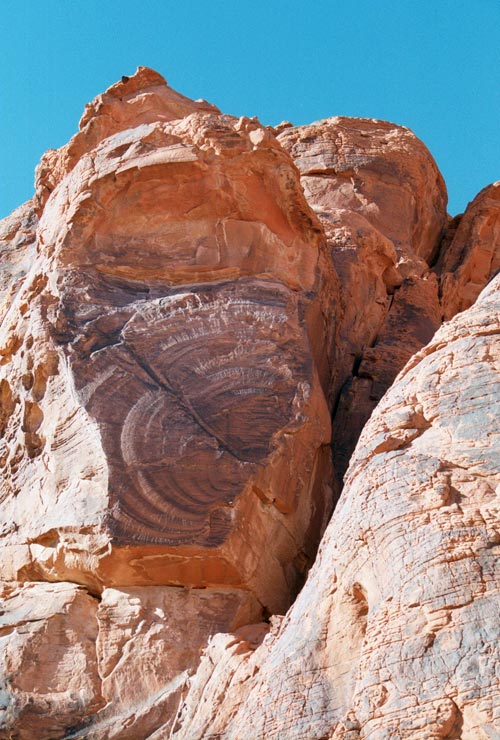
The Valley of Fire State Park lies within the sky glow of Las Vegas, about 55 miles east of the city lights. The Park is reknowned for its scenic red rocks, petroglyphs, and petrified wood, and is easily accessible by car. You can drive from one spot to another and take short hikes to view the scenery. Wandering the well-marked trails in the park, one finds it hard to think that civilization (well, Las Vegas, anyway) is so close by.
The park is Nevada’s largest, dedicated in 1935, and is popular with tourists and locals who bring their visitors for a sample of the non-gaming side of Nevada. It is not a place to experience the solitude that the desert offers in many other locations, but the petroglyphs and scenery make it well worth the trip. The weathered red sandstone rock formations rise against the backdrop of the dry Mojave Desert. The land slopes gradually down toward the once mighty Colorado River, now held back by Hoover Dam to form Lake Mead. The lake itself is about 100 feet below normal levels, due to a years-long drought in the West and the ever-increasing demands of humans.
We visited the park in December during the school holidays several years ago when our son was visiting. The weather was perfect, sunny with a slight chill in the air in the shady spots. The presence of other people made it difficult to reflect much on what we were seeing, the petroglyphs, but I take pleasure in going back to look at the photographs at my leisure.
Some of the petroglyphs are scraped onto the dark “desert varnish” on the rock, others onto the red sandstone. The work has been attributed to the “Basket maker people” and the later “Anasazi farmers” inhabiting the area from about 300 B.C. to 1150 A.D. according to Park information. I especially like the rock formation picture, above. Though not a petroglyph, its huge round shape and rough form seem to have a human meaning. Or not…all in the eye of the beholder!
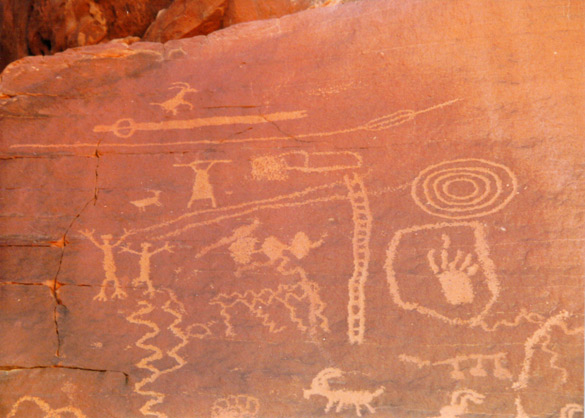
Desert bighorn sheep (NV state animal) often provided subject matter for the rock artists along with the atlatl, as depicted on “Atlatl Rock.” The atlatl is an ancient hunting tool that allowed a projectile to be thrown with force and accuracy.
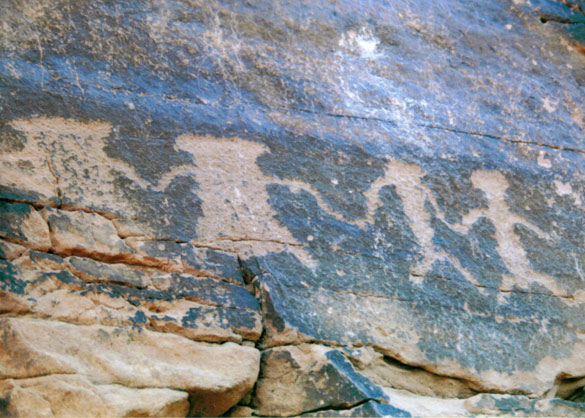
The linked figures are intriguing. Is it a family motif? Or more ritualistic, with the stylized large figures on the left – shamans, perhaps – leading the more recognizable human figures – a man and woman – in a ceremony or dance?
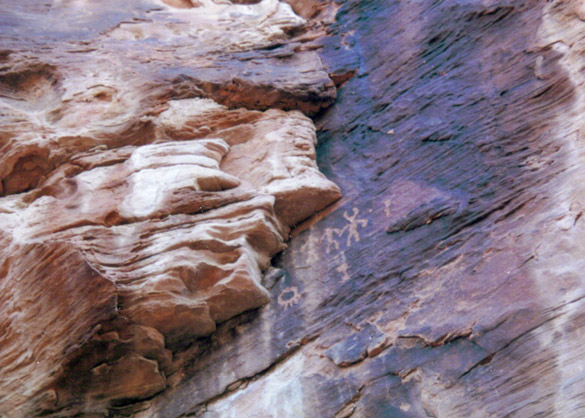
Another set of figures, high on a canyon wall, seem to depict a person wearing a horned headdress joining hands with two unadorned people.
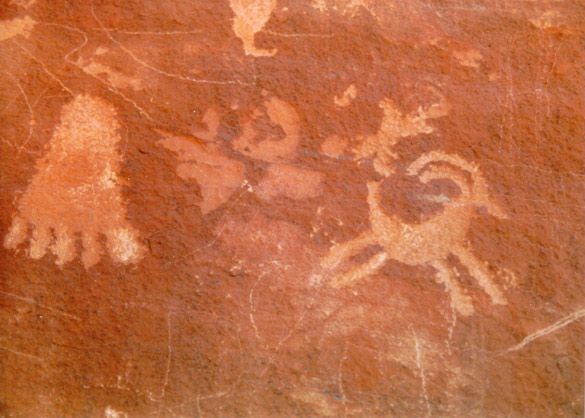
The footprint petroglyph shows signs of vandalism, unfortunately, where someone scratched across the rock face. For centuries, the petroglyphs withstood the elements, wind, rain, desert heat. I hope they will survive the modern era.
May 6, 2010 in Rock Art & Archaeology by Marja-Leena
These are very fascinating and beautiful images. It’s interesting to note that rock and cave art all began about 40,000 years ago. One has to wonder what set it all off.
Susan: yes, wouldn’t you just love to know what provided that spark of creativity?
How on earth did they draw up on those high places? Did they have wings then? (just kidding!) The idea that the stone has moved since then is intriguing, though. Rock as a “living” entity. Maybe those long-ago artists “knew” this and wanted to honour it with art.
R, these kind of mysteries, to me anyway, reveal quite intelligent and creative societies, wouldn’t you say?
You are so right, Marja-Leena! It is disheartening to hear folks talk down their noses about “primitive” societies as though we had all the knowledge today.
R: it’s hard to imagine that the solid earth beneath our feet is in constant motion over the centuries! The early people connected to their world and nature in a fundamental way. We tend to view history through a distorted lens of technology that makes anyone not of our era “primitive.”